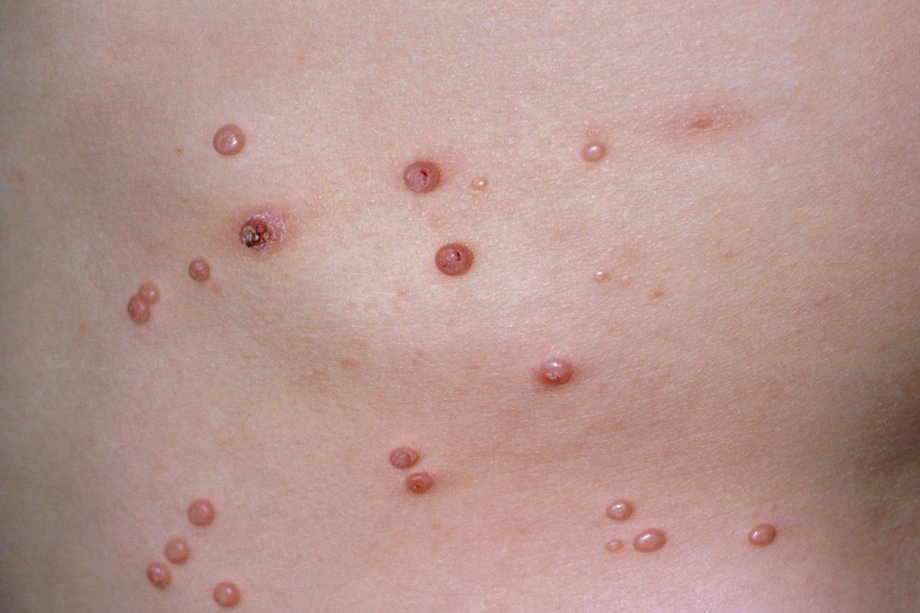SymptomsMolluscum contagiosum
The main symptom of molluscum contagiosum (MC) is a number of small spots on the skin.
The spots are usually firm and dome-shaped, with a small dimple in the middle. They're usually less than 5mm (0.5cm) across, but can sometimes be bigger.
They're typically pink or red, although they may have a tiny white or yellow head in the centre. If this head ruptures (splits), a thick yellowy-white substance will be released, which is highly infectious.

It's important not to squeeze the spots, as this will increase the risk of the infection spreading to other parts of the body.
The spots associated with MC are usually painless, although they can sometimes be itchy and some people develop areas of red, dry and cracked skin around them.
Most people have between 20 and 30 spots, although people with a weakened immune system often have more. The spots may develop in small clusters and can be spread across different parts of the body.
They're most often found in the armpit, behind the knees or on the groin.
In a few cases, particularly when it's spread during sexual contact, spots can develop on the genitals and nearby skin.
How the condition progresses
In many cases, the individual spots will start to crust over and heal within 2 months. Some people may experience mild swelling and redness around each spot as it begins to heal.
The spots do not usually leave scars, but they may leave a small area of lighter skin or a tiny pitted mark, particularly if treatment was needed.
As the virus that causes MC can spread to other parts of the body, new spots may develop as the old ones are disappearing. This can result in an episode of MC lasting for quite a long time.
Most cases clear up within around 6-18 months, but the condition can, occasionally, persist for several years.